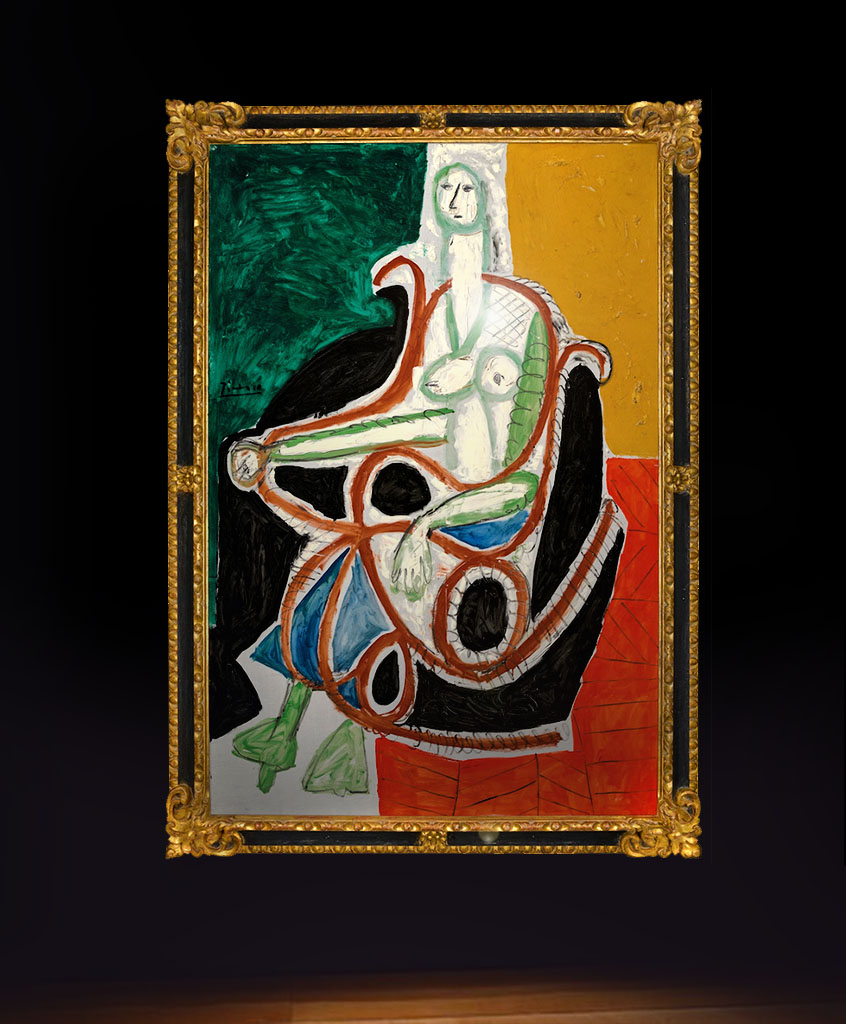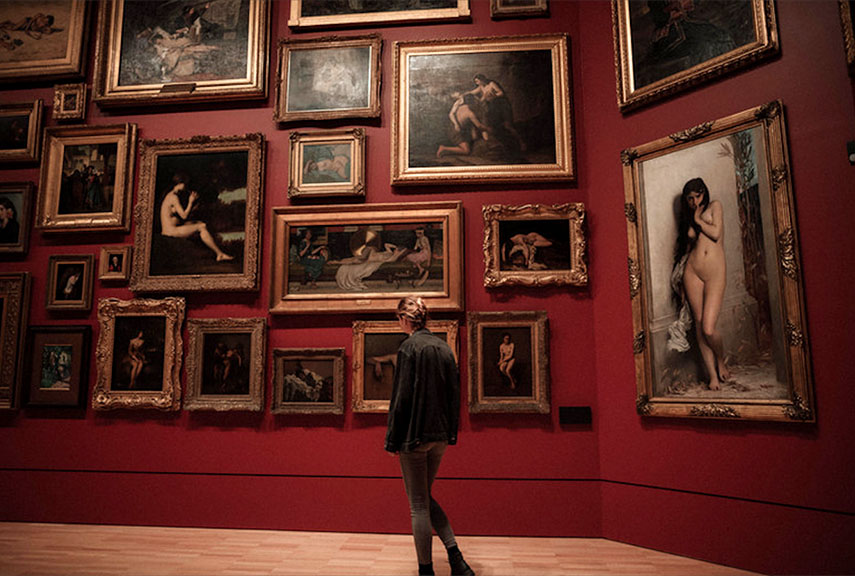Analysis of Global Collectibles Market Trends and Considerations for 2023
- OGP

- Mar 14, 2023
- 7 min read
By OGP Reporters / Members Contribute File Photos
Pablo Picasso, Femme dans un rocking-chair (Jacqueline) (1956).
Oh Good Party
Overall, as the global economy continues to face challenges such as supply chain disruptions and inflation, the art market is also constantly evolving and changing. For example, auction houses are seeking new business areas and development models to meet the needs of different clients. As investors and collectors, it is also important to stay informed about market dynamics, seize opportunities, and make the right decisions for investments and collections.
The auction is the market for collectibles' most important representative. The annual auctions held by renowned auction houses draw the interest of collectors and art enthusiasts from all over the world because they are a topic that has always been intriguing and suspenseful. The auction market had a successful year in 2022. A 17% increase over the previous year, Christie's saw total sales of $8.4 billion, which included $7.2 billion in auction sales and $1.2 billion in private sales. But Sotheby's annual auction sales were only $6.4 billion, down 7% from the year before. Despite the auction market's successful performance in 2022, it also demonstrated the market's volatility and changes. Based on feedback from numerous collectors, auction houses worldwide, and multiple markets, we will give you a thorough and in-depth analysis of the collector's market and trends for 2023 in the hopes of giving you a reference for your love of collecting.
(Christie’s 20th/21st Century London Evening Sale with The Art of the Surreal Evening Sale. Photo courtesy of Christie's Images Ltd 2023)
On February 28, 2023, Christie's held two consecutive "Evening" auctions during London Auction Week, bringing in £167.8 million ($202.2 million) in total sales. Despite a volatile economic environment and an outbreak of winter flu that caused many to miss out on commissions, sales were within expectations. The final hammer price was £137.9 million ($166.2 million), reflecting a result that was not particularly noteworthy but still not entirely discouraging. The attendance was not surprising as the London event represented the first public market test conducted in a financial environment that had become increasingly turbulent over the past year. The two auctions offered a total of 106 lots, down from £4.6 million to £7.8 million ($5.5 million to $9.4 million). Experts doubled their efforts before the sale to secure as many as 27 guarantees, three of which were provided by the house and 24 by third parties. Six records were set in total, but 12 lots failed to find buyers, 10 of which were in the main auction and two in the evening's Surrealist section. The sell-through rates for the two auctions were 89% and 91%, respectively.
It is evident that materials are a challenge for auctions in the 20th / 21st Century Evening Sale, despite the efforts of the brand to find fresh works that can stimulate purchases; 66% of the evening auctions for 20/21st century works have never been publicly sold before. The top lot of the evening was a large-scale late portrait of the artist, Pablo Picasso’s Femme dans un rocking-chair (Jacqueline) (1956, estimated at £15-20 million, $18-24 million). When a Giacometti chandelier (The Giacometti chandelier) from the relative of the artist John Craxton was sold for only £250 ($700) at an antique shop in Marylebone in the 1960s, his eyes nearly popped out of his head, and it sold for a whopping £2.4 million. Another famous sculpture is the original Baselitz carving from the Swiss Hess Art Collection, Frau Paganismus (Mrs Paganism) from 1994. Another Baselitz sculpture likely responded to the market, breaking the artist's record price of $11.2 million at Sotheby's New York last May. This lot sold for £3.8 million ($4.5 million), below its minimum estimate of £4 million ($4.8 million). Caroline Walker also demonstrated sustained enthusiasm, with a series of bids pushing the hammer price easily above her high estimate of £200,000 ($240,460) to £550,000 ($661,265).
To provide a direct comparison of sales, Christie's 2021 equivalent auctions - the relay auctions of 20th and 21st-century works between Shanghai and London, and the finale Surrealist Art auction - brought in over £249 million ($334 million) in revenue after expenses. Revenue for 2022 was down 32.6%.
(The Macklowe Collection sale at Sotheby's. Image courtesy Sotheby's)
Taking a look at Sotheby's, they have also announced record-breaking annual data for 2022, with an estimated total sales of $8 billion, higher than the $7.3 billion in 2021. However, upon closer inspection, it can be seen that sales of art and luxury goods decreased by 7% compared to the previous year, totaling only $6.4 billion in revenue as of December 14. Sotheby's inflated its total sales figures by including the revenue from the recently acquired automobile auction house and projected luxury goods sales before the end of the year. The company attributed its performance boost this year to "fresh to market single-owner collections," with the Macklowe Collection alone earning $922 million in the past two years. Sotheby's also highlighted new sales formats with a 100% sell-through rate or "white glove" auctions, including "The Now" and "Artists' Choice." According to the report, the number of works by female artists sold for over $1 million has increased by 70% since 2019. The company also announced an ambitious expansion plan in Asia, and its financial services division experienced unprecedented growth.
Sotheby’s also reported growth in its digital initiatives, with online sales increasing by 31% year-on-year, accounting for 22% of the total sales figure. In 2022, the auction house introduced new virtual reality experiences and expanded its partnership with Artsy to reach new audiences. The brand also launched a new mobile application that provides personalized recommendations and ways to participate in auctions and events. Christie's also offers online bidding services using new technologies for global buyers, but many buyers still prefer to attend auctions in person. This is interesting because in the digital age, many people may think that online auctions will gradually replace traditional auctions, but some buyers who attend auctions prefer the excitement of the auction experience.
Indeed, compared to the global art market, the European market has a strong cultural and historical tradition, as well as a large number of collectors and museums. Contemporary art remains one of the most popular categories of art. In addition, European auction houses have a more comprehensive auction ecosystem and professional talent, which can attract more art buyers and sellers. However, the complexity of the art trading environment and high tax costs in the European market may have an impact on both buyers and sellers. On the other hand, the advantage of the North American market lies in its more mature and stable economic system and cultural environment, and it is also a major buyer market for global art. However, the competition is fierce, and there may be situations of excessive marketing and overvaluation.
In terms of the Asian market, contemporary art performed strongly in the 2022 auction market, but antique art still holds a certain market share. Collectors' interest in contemporary art continues to increase, while also maintaining a high degree of recognition for the value of antique art. This indicates that buyers in the art market have strong demand for different types of art, and also reflects the importance of contemporary and antique art in terms of value and collection. These transactions also reflect the continued enthusiasm in the Asian market for contemporary art and ancient cultural relics, as well as the rapid growth of economic strength and consumption levels. Especially in China, which has gradually emerged as one of the world's largest art markets in recent years, it has more and more high-net-worth individuals and collectors, while also continuously emerging more local artists and cultural brands. Similarly, the disadvantage of the Asian market is that, due to the relatively new market, there may still be shortcomings in protecting intellectual property rights, combating counterfeit and inferior products, and art appraisal and valuation.
In recent years, the art market has been affected by fluctuations due to the unstable global economic situation and political environment, which may be related to the ongoing impact of the COVID-19 pandemic. Although global auction sales may decrease in a certain year, it does not necessarily indicate an overall market decline. This is because the market value of art and jewelry is subject to changes based on supply and demand, which is influenced by various factors such as the global economic situation, political situation, and people's collecting interests. Therefore, auction sales figures can only serve as a reference indicator and cannot fully reflect the overall market changes.
Overall, as the global economy continues to face challenges such as supply chain disruptions and inflation, the art market is also constantly evolving and changing. For example, auction houses are seeking new business areas and development models to meet the needs of different clients. As investors and collectors, it is also important to stay informed about market dynamics, seize opportunities, and make the right decisions for investments and collections.
The auction market is a highly competitive market, while the collectibles market requires long-term accumulation and does not have obvious liquidity and transparency. However, collectors can make important contributions to the protection and inheritance of art and cultural heritage, as well as pursue their interests and gain profits from their investments.
In addition, we still need to be aware of some of the downsides of the collectibles market, such as the accuracy and reliability of collection valuations, the problem of art forgery, price volatility risks, high commissions and taxes, among others.
When auction companies conduct auctions, they usually appraise the items for sale. However, the accuracy and reliability of appraisals have always been one of the challenges faced by the auction market. If the appraisal is too high, it may result in buyers losing interest, while if it is too low, they may miss the opportunity to sell at a high price. In addition, accuracy in appraising art is particularly important because many artworks' prices are related to their history and background. To address this issue, some auction companies have begun using technologies such as artificial intelligence and big data analysis to improve the accuracy and reliability of appraisals.
Art forgery has always been a major problem in the auction market. Counterfeit artworks can affect the reputation of auction companies and cause significant losses to buyers. To address this issue, auction companies usually hire professional appraisers to authenticate the items for sale. However, even professional appraisers find it difficult to completely eliminate the existence of counterfeit items.
In the past few years, the collectibles market has been a seller's market, which means that sellers can control the market through pricing and other strategies. However, there are signs that this trend is changing, and the market is moving toward a buyer's market. This is because more buyers are reaching agreements and avoiding competition as much as possible when participating in auctions. As the needs and opinions of buyers become more important, it means that art intermediaries (including auction houses) need to consider the needs and opinions of buyers more and better balance the interests of sellers and buyers in auctions.
Therefore, the collecting market requires regulatory and technological support, as well as education and popularization work, in order to increase consumer awareness and ensure the healthy development of the market.



















Comments